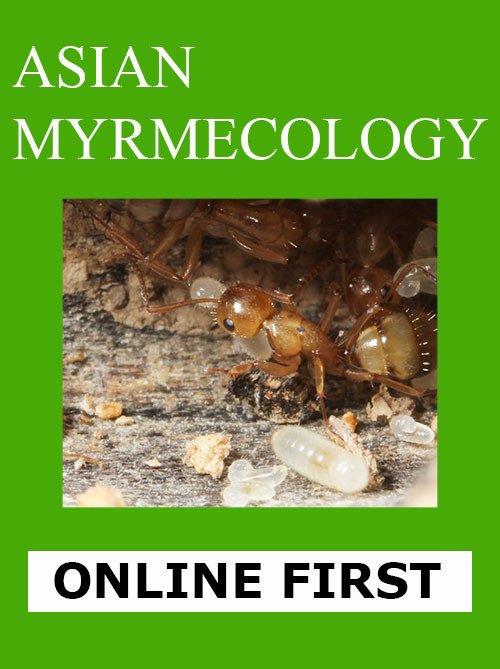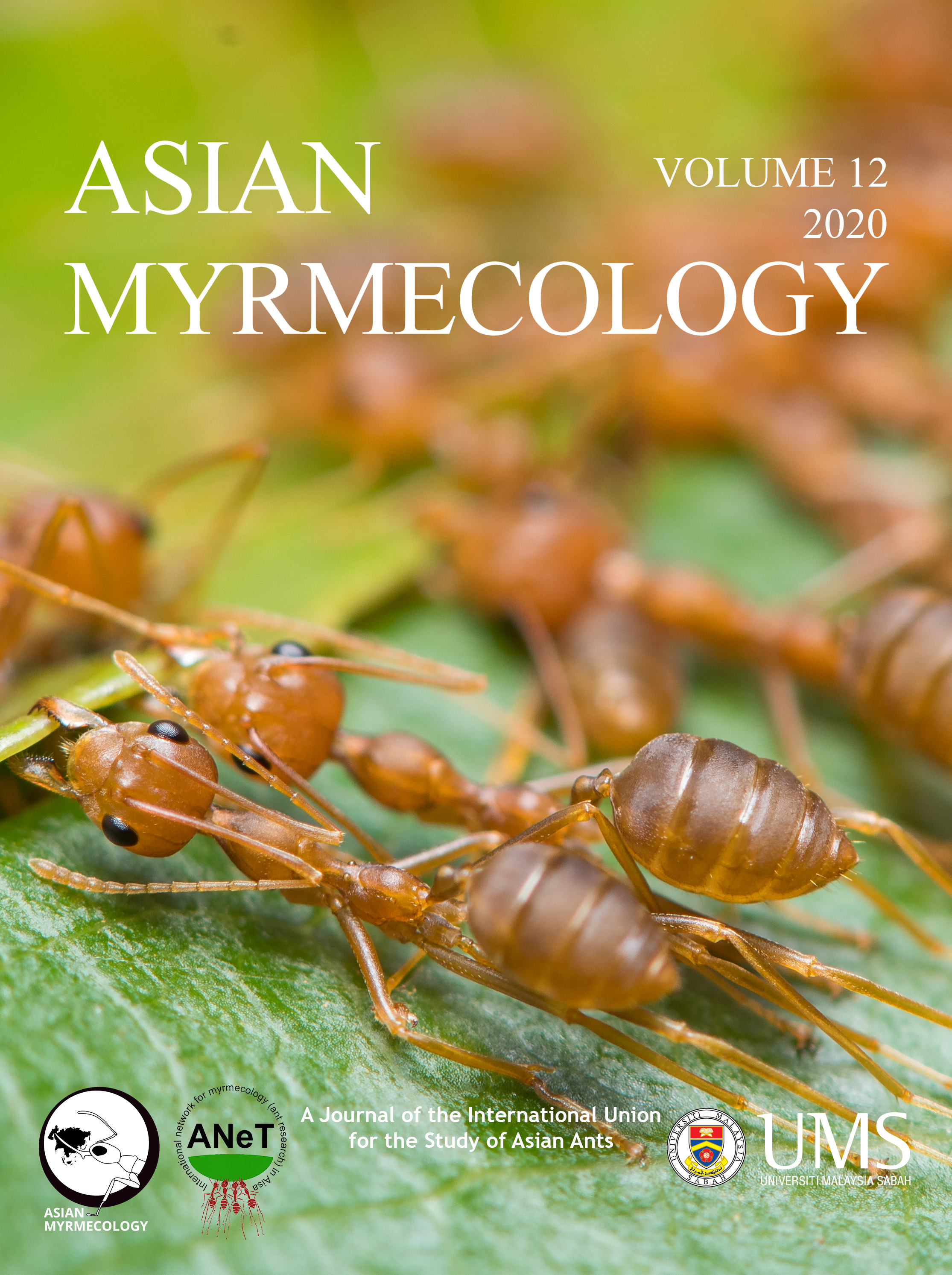ASIAN
MYRMECOLOGY
online first (online version of paper published before print issue)
DOI: 10.20362/am.014007
Asian Myrmecology 14: e014007 (1-33)
article first published online: 31/December/2021
Taxonomic review of the ant genus Lordomyrma Emery, 1897 (Hymenoptera, Formicidae) from China, with description of two species and an identification key to the known species of the world
XIA LIU1,2, ZHENGHUI XU1,2* & FRANCISCO HITA GARCIA3
Abstract:
China is a large country encompassing a wide range of climate zones and bioregions,
and hosting several of the world’s biodiversity hotspots. However, even though the country possesses
such rich biota, many taxa still remain to be discovered and formally described. In this study we review
the myrmicine ant genus Lordomyrma Emery, 1897 from China. We recognize four species for
the country, of which we describe two as new: L. bhutanensis (Baroni Urbani, 1977), L. idianale Taylor,
2012, L. jingpo sp. nov., and L. nima sp. nov. In addition, we propose L. sinensis (Ma et al., 2007)
syn. nov. as a junior synonym of L. bhutanensis. These nomenclatorial acts raise the global count for
the genus to 35 species.
Both new species, Lordomyrma jingpo sp. nov. and Lordomyrma nima sp. nov. as well
as the queen of L. bhutanensis, which is described for the first time, were collected in Southwestern
China. Furthermore, in order to facilitate identification within the genus, we provide an updated key to
known species of Lordomyrma in the world.
Keywords:
Myrmicinae, Southwest China, Taxonomy, Tibet, Yunnan
Get PDF (29.9 MB):
XIA LIU1,2, ZHENGHUI XU1,2* & FRANCISCO HITA GARCIA3
Abstract:
China is a large country encompassing a wide range of climate zones and bioregions, and hosting several of the world’s biodiversity hotspots. However, even though the country possesses such rich biota, many taxa still remain to be discovered and formally described. In this study we review the myrmicine ant genus Lordomyrma Emery, 1897 from China. We recognize four species for the country, of which we describe two as new: L. bhutanensis (Baroni Urbani, 1977), L. idianale Taylor, 2012, L. jingpo sp. nov., and L. nima sp. nov. In addition, we propose L. sinensis (Ma et al., 2007) syn. nov. as a junior synonym of L. bhutanensis. These nomenclatorial acts raise the global count for the genus to 35 species. Both new species, Lordomyrma jingpo sp. nov. and Lordomyrma nima sp. nov. as well as the queen of L. bhutanensis, which is described for the first time, were collected in Southwestern China. Furthermore, in order to facilitate identification within the genus, we provide an updated key to known species of Lordomyrma in the world.
Keywords:
Myrmicinae, Southwest China, Taxonomy, Tibet, Yunnan
Get PDF (29.9 MB):
The pdf file for this manuscript was updated on Oct 10, 2024 to include associated ZooBank IDs for new species descriptions
1Key Laboratory of Forest Disaster Warning and Control in Yunnan Province, College of Biodiversity Conservation, Southwest Forestry University, Kunming, Yunnan Province 650224, China
2Key Laboratory of Forest Resources Conservation and Utilization in the Southwest Mountains of China Ministry of Education, Southwest Forestry University, Kunming, Yunnan Province 650224, China
3Biodiversity and Biocomplexity Unit, Okinawa Institute of Science and Technology Graduate University, Okinawa Prefecture, 904-0495, Japan.
*Corresponding author: xuzhenghui1962@163.com



